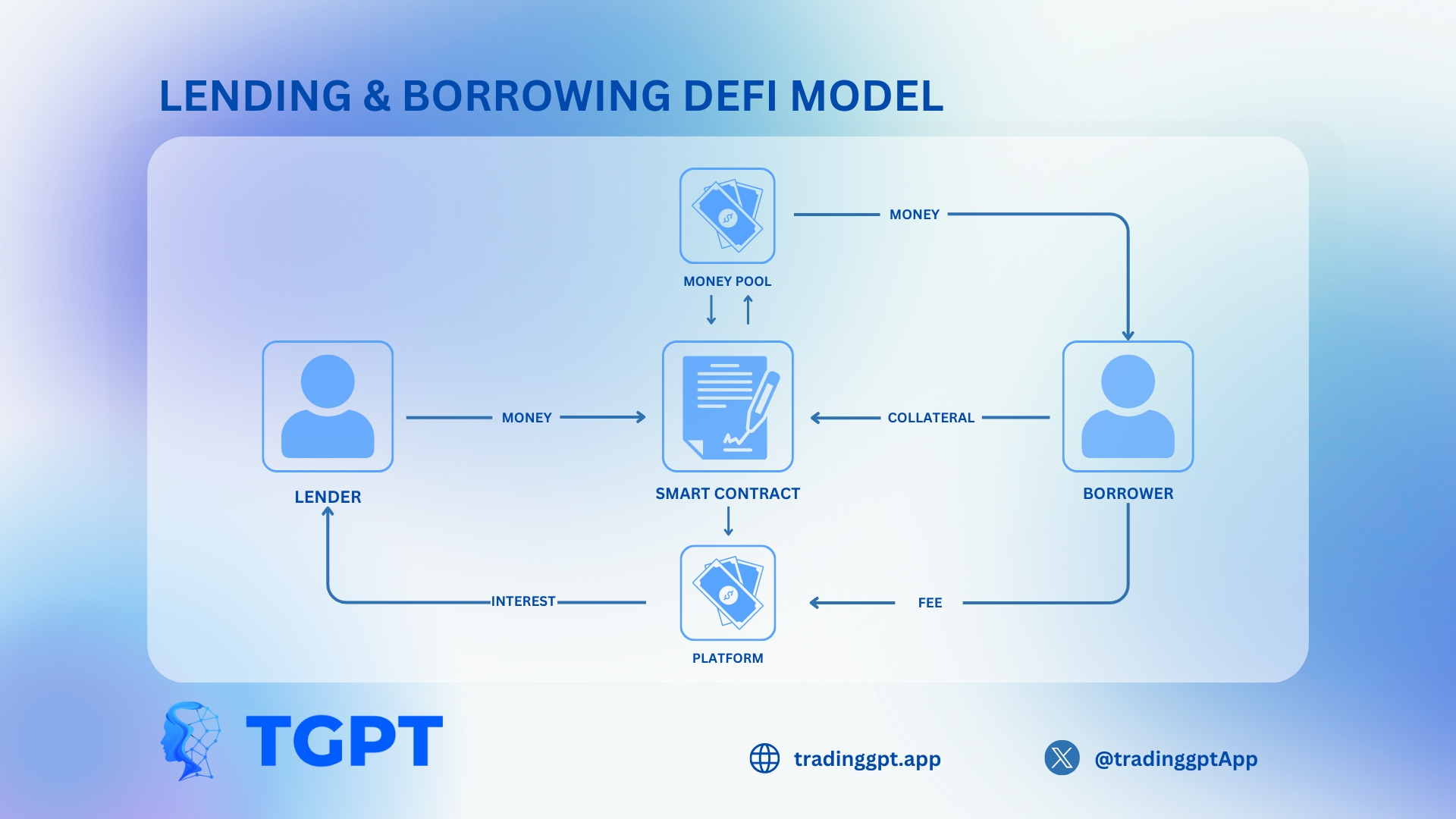🔁Lending & Borrowing DeFi
Lending is the process by which one person or entity provides a sum of money or property to another on the condition that the borrower pays back the borrowed amount with interest or fees within a specified period of time.
Borrowing is the process by which an individual or entity requests and receives a sum of money or property from another person or entity with a commitment to repay the borrowed amount with interest or fees over a period of time. determined time.
Thus, the lender is the person who provides financial resources or assets, while the borrower is the recipient and commits to return the borrowed money or assets according to the agreed terms.
What is Lending and Borrowing in DeFi?

Lending in the crypto and DeFi sectors is similar to traditional lending, but there are some important differences, such as:
Cryptocurrency loans are typically secured by collateral, meaning the borrower must put up cryptocurrency as collateral to secure the loan. This means that if the borrower fails to repay the loan, the lender can foreclose on the collateral.
Cryptocurrency loans are often offered at higher interest rates than traditional loans. This is because cryptocurrency is a volatile asset, and lenders are taking on more risk when lending.
Cryptocurrency loans are typically processed faster than traditional loans. This is because cryptocurrency lending platforms do not have to comply with the same regulatory requirements as traditional banks.
However, current lending and borrowing platforms in the crypto and DeFi markets are still operating based on the principle of centralized cash flow. This means that all of the lender's crypto assets will be held and loaned out by the platform to generate profit. This poses the potential risk of a lack of transparency if the platform owner distributes loans for the wrong purpose.
We see huge potential in the lending and borrowing industry, so we have built a peer-to-peer (P2P) lending and borrowing model. Help lenders and borrowers connect directly with each other, which will help make all loan metrics operationally transparent.